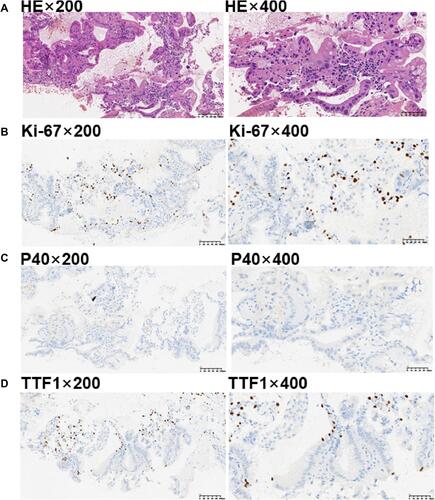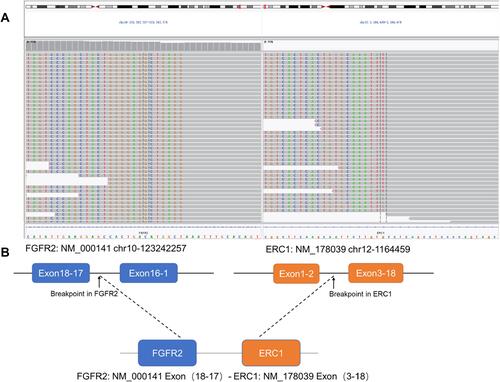Figures & data
Figure 1 CT shows (A) the puncture position. (B–D) new lung cavities and metastases before treatment with anlotinib. (E–H) stabilization of lung lesions after anlotinib treatment. The red arrows in the figure indicate changes in lesions before and after treatment.



